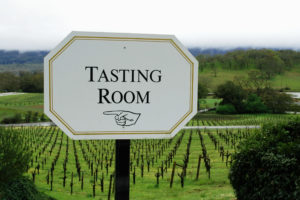Two wine industry conferences happened these past few months—the Wine Industry Financial Symposium, and WIN Expo. Presentations at these conferences, along with some well-researched industry reports, paint a challenging picture for wineries going into 2019.
“A 31% Increase In Number Of California Wineries Makes Financial Success That Much Harder”
That was the headline of a Forbes article earlier this month highlighting the Wine Industry Financial Symposium, along with Rabobank’s November 2018 Wine Quarterly. The article makes clear that increasing competition is putting more pressure on wineries, with 58% of large wineries and 40% of small wineries seeing “…brand proliferation as a drag on revenue and profitability.”
In short, wineries are going to be competing fiercely and trying hard to differentiate themselves. All the more reason to go back to the 5 (now 7) Marketing Fundamentals for Smaller Wineries.
Tasting Rooms Face Tough Times
Another theme that came out of these conferences is the tough position tasting rooms are in as a channel for wine sales, especially given that competition.
It’s a fact that the top two distributors now handle the majority of all U.S. wine sold, and they have nearly 2000 wines in their portfolio. It’s hard to stand out in your field with competition like that.
This is why more and more wineries are turning to DTC, a channel which has been growing steadily for more than a year. One of the ways to successfully build this channel, though, if for wineries to draw people into their tasting rooms first.
And there’s where the challenges start. For one thing, overall visits to wineries have dropped. The wildfires surely had a large hand in this. But there also is a small but growing backlash in Napa and Sonoma against wine tourism. (Napa, for example, is going to tighten code enforcement against wineries that exceed a certain number of visitors in a day.) Consumer behavior is playing a role, too: People are spending more time in tasting rooms but visiting fewer per day, reducing the total number flowing through a tasting room on a given day. And there are looming fears of a recession, too.
We will mention that both Tammy Boatright and Sandra Hess took part in a great panel at WIN Expo. They and others shared their research showing the distinction between tasting rooms and wine clubs that performed beyond the average, and those that didn’t, because of their level of commitment to staff training. We suspect that wineries investing in more training will find themselves edging out the competition in 2019.
“We’ve All Become Amazoned.”
That’s how Laura Larson, the founder of Virtual Vines DTC Consulting Services, put it. Customer expectations are changing, and wineries have to keep up.
Of course, wine shipping is wildly different than shipping the typical product that Amazon sells. It’s really important to keep those differences in mind, especially when shipping wine DTC.
Still, if we know what those expectations are, we can work to manage them. For example, customers want easy access to their purchase history, personalized recommendations, engaged staff (in the tasting room), and better communication via email (for wine shipments). Wineries that learn how to incorporate digital tools into their purchasing experience will build better experiences for the customer, and ultimately stand out from the competition. (We note that many of these features were mentioned by Andrew Kamphuis in our recent interview with him on this blog.)
We predict that more and more wineries are looking to create “white glove service” for their tasting rooms, their online sales channels, and their final-mile deliveries. That seemed to be a common theme underneath much of what was being said at these two conferences, and it will continue to be a guiding vision for wineries in 2019.
For some great examples of white glove service, see our white paper “White Glove Service: Nine Case Studies That Reveal the Keys to Building True Customer-Oriented Organizations.”
And if you want to discuss how to make that work for your winery, especially when it comes to wine shipping and logistics, please reach out to us!
The Copper Peak Team




